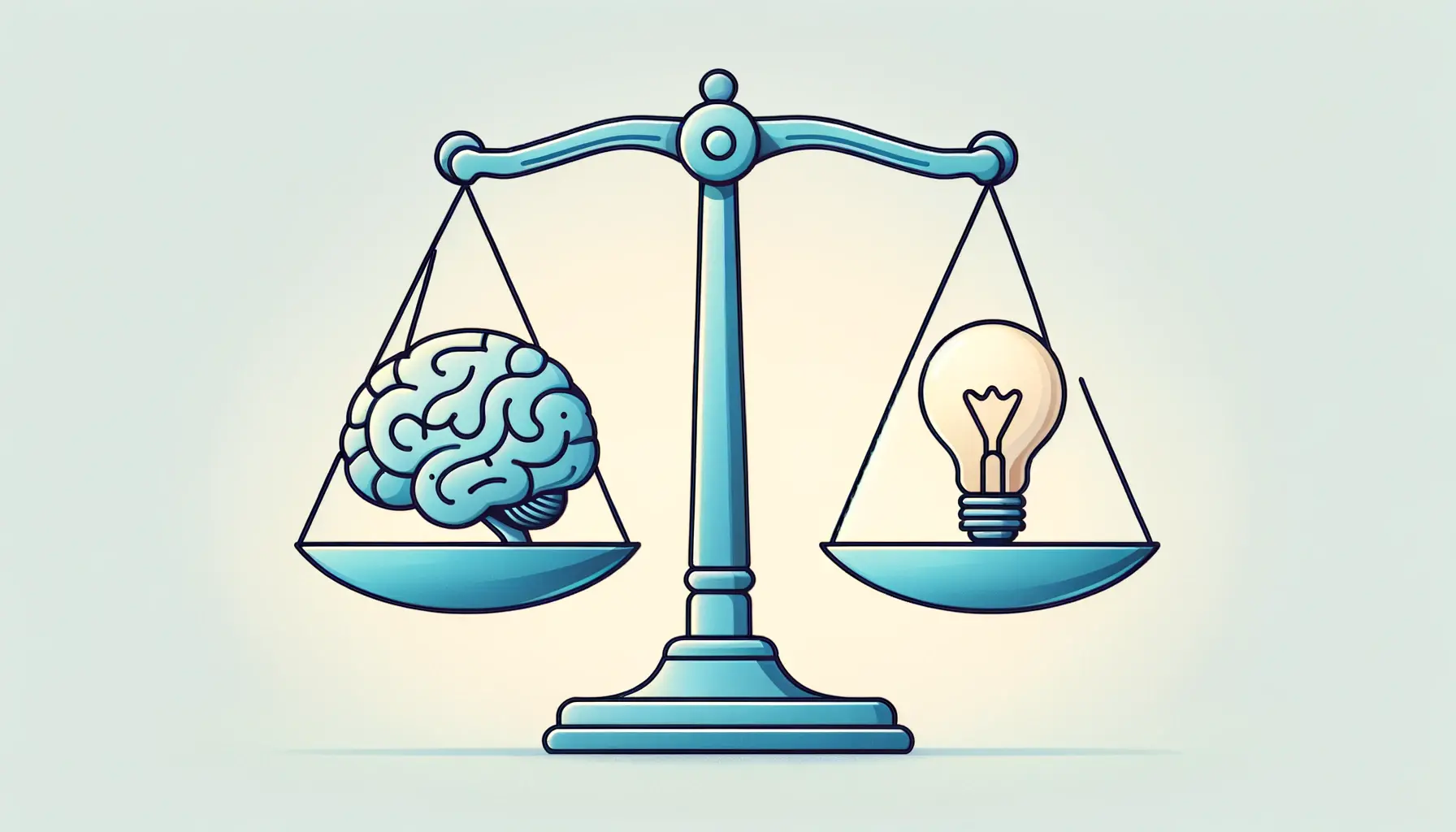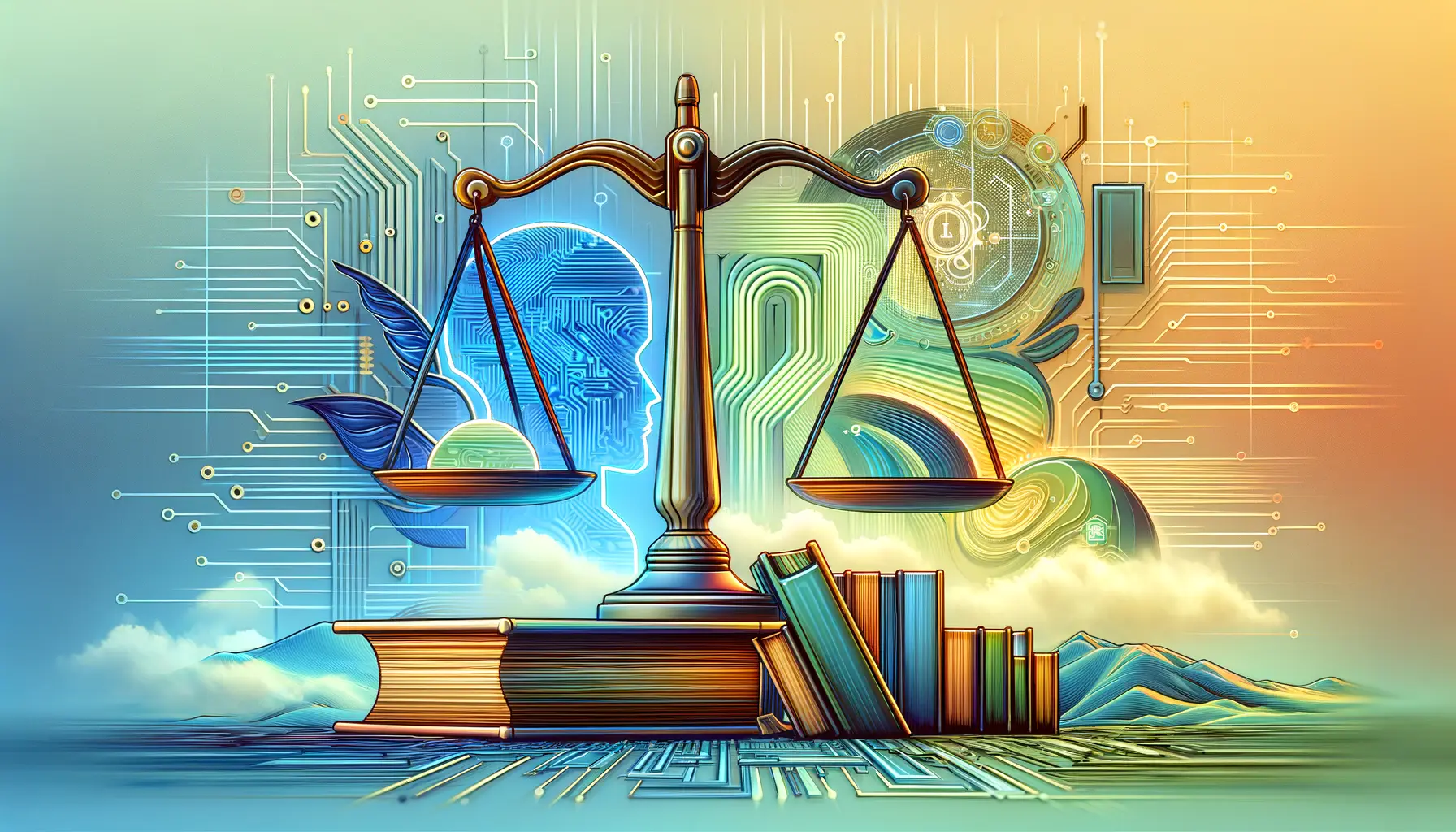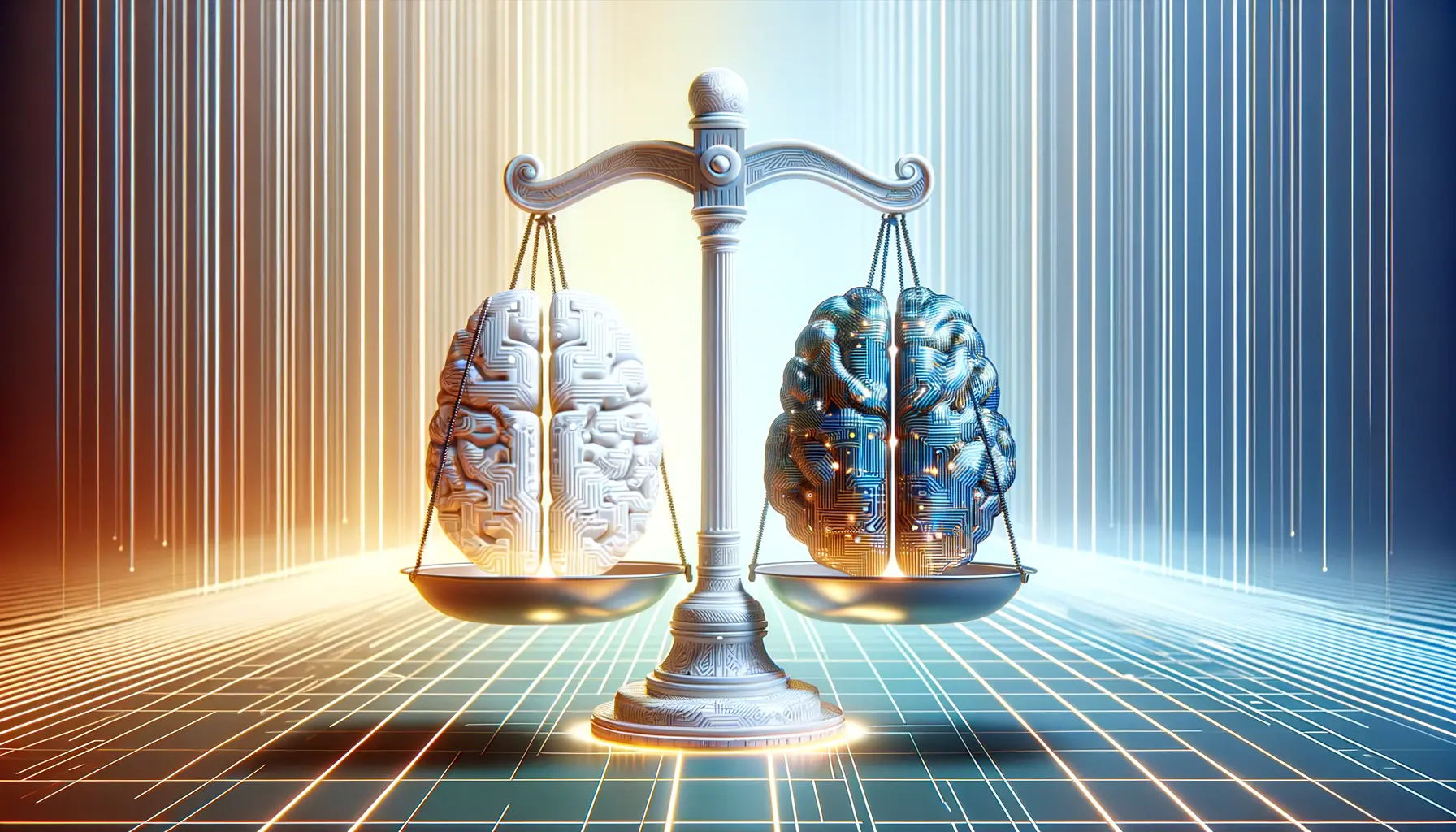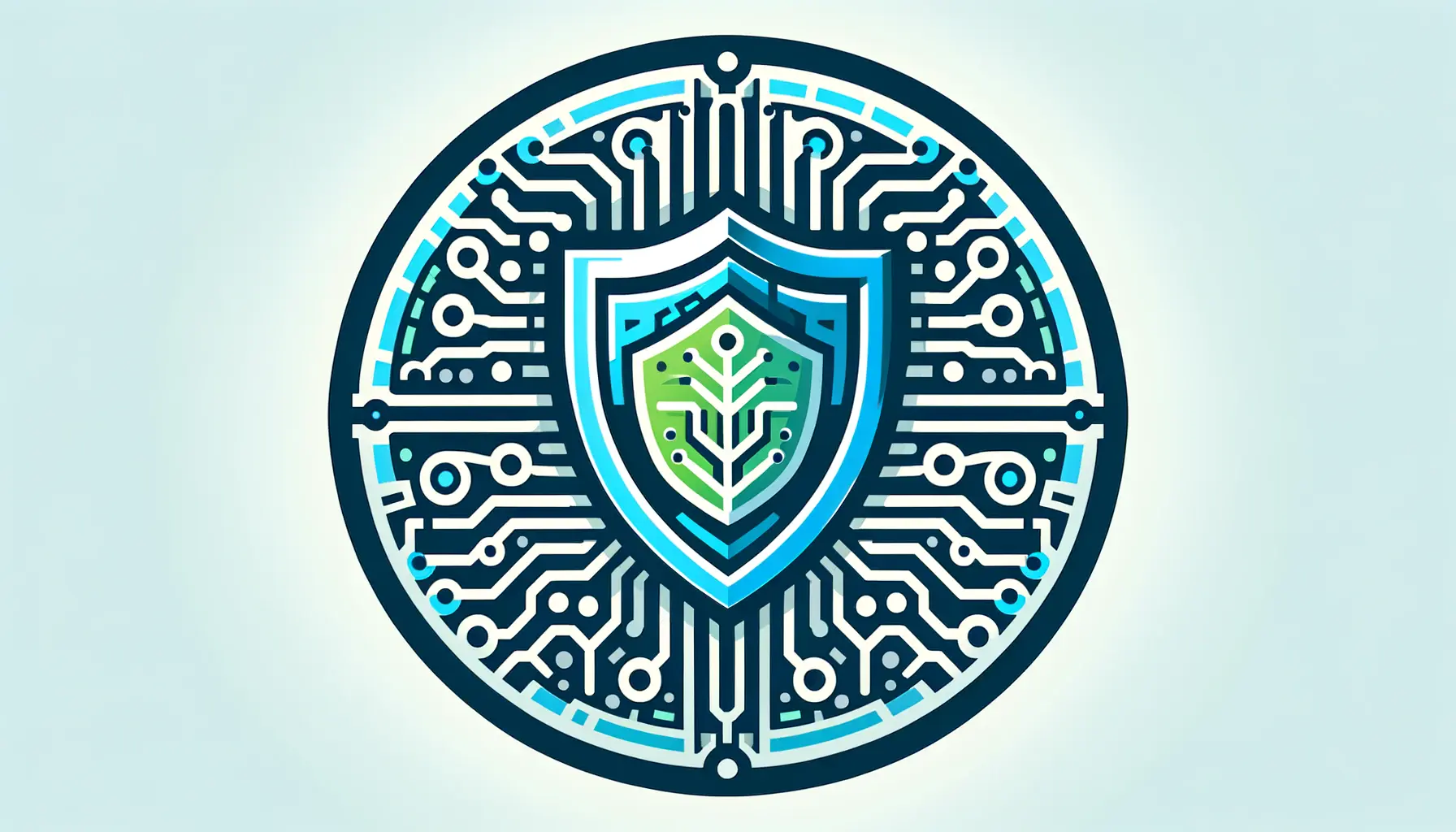The advent of ChatGPT 4 has ushered in a new era of artificial intelligence, bringing with it a host of ethical considerations and safety concerns.
As this technology becomes increasingly integrated into our daily lives, understanding its ethical implications is not just beneficial but necessary.
The conversation around ChatGPT 4’s ethics and safety is multifaceted, touching on issues of responsibility, bias, privacy, and the broader societal impacts of deploying such advanced AI systems.
At the heart of ChatGPT 4’s development and deployment are principles aimed at ensuring the technology is used responsibly and for the greater good.
However, as with any powerful tool, there is potential for misuse, unintended consequences, and ethical dilemmas.
This article aims to delve deep into these aspects, providing a comprehensive overview of the ethical and safety considerations associated with ChatGPT 4, and offering insights into how developers, users, and policymakers can navigate these challenges.
- Foundational Ethics of ChatGPT 4
- Addressing Bias and Fairness
- Enhancing Transparency and Accountability
- Privacy and Security in ChatGPT 4
- Global Impact and Social Responsibility
- Future Directions in AI Ethics and Safety
- Empowering Users in the AI Era
- Charting the Path Forward: Ethics and Safety in the Age of ChatGPT 4
- FAQs on ChatGPT 4’s Ethics and Safety
Foundational Ethics of ChatGPT 4
Principles Guiding Development
The development of ChatGPT 4 has been guided by a set of core ethical principles designed to ensure the technology’s positive impact on society.
These principles include fairness, accountability, transparency, and the promotion of well-being.
By embedding these values into the AI’s design and operational framework, developers aim to create a tool that not only enhances productivity and creativity but also respects human dignity and rights.
One of the key challenges in AI ethics is ensuring that the technology does not perpetuate or exacerbate existing inequalities.
To address this, ChatGPT 4 incorporates mechanisms for detecting and mitigating bias in its responses.
This involves training the model on diverse datasets and implementing feedback loops that allow for continuous improvement in how the AI understands and interacts with the world.
Safety Measures and Risk Mitigation
Safety is a paramount concern in the deployment of ChatGPT 4, encompassing both the prevention of harm and the protection of user data.
Developers have employed advanced techniques to safeguard against malicious use, such as filtering harmful content and securing the AI against attempts to exploit its capabilities for unethical purposes.
Additionally, ChatGPT 4 is designed to respect user privacy, with strict data handling and processing protocols in place to ensure confidentiality and compliance with global data protection regulations.
Despite these measures, the dynamic nature of AI interactions means that risks cannot be entirely eliminated.
As such, ongoing vigilance and adaptation are required to identify new threats and vulnerabilities.
This includes engaging with the broader AI ethics community to share knowledge and best practices, as well as developing robust response strategies for potential ethical breaches.
Understanding and addressing the ethical and safety challenges of ChatGPT 4 is a collaborative effort, requiring input from developers, users, and policymakers alike.
Addressing Bias and Fairness
The conversation around AI ethics often centers on the issues of bias and fairness, with ChatGPT 4 being no exception.
Ensuring that AI systems treat all users equitably and do not perpetuate existing societal biases is a significant challenge.
ChatGPT 4’s developers have taken several steps to address these concerns, aiming to create an AI that is as unbiased and fair as possible.
One of the primary strategies involves diversifying the training data used to educate the AI.
By incorporating a wide range of perspectives, experiences, and linguistic variations, the goal is to minimize the risk of biased outputs.
However, achieving complete neutrality is an ongoing process that requires constant monitoring and adjustment.
Techniques for Mitigating Bias
To combat bias, ChatGPT 4 employs a variety of techniques:
- Data Augmentation: Expanding the training dataset to include underrepresented groups and viewpoints helps in reducing bias.
- Algorithmic Auditing: Regularly reviewing and adjusting the AI’s algorithms ensures that biases are identified and corrected.
- User Feedback: Incorporating feedback from a diverse user base allows for the identification of bias in real-world scenarios.
Challenges in Ensuring Fairness
Despite these efforts, ensuring fairness in AI outputs remains a complex challenge.
The subjective nature of fairness means that what is considered balanced by some may be viewed as biased by others.
Additionally, the vast amount of information ChatGPT 4 processes can sometimes lead to unexpected or undesirable outputs.
Addressing these challenges requires a multifaceted approach, including:
- Continual learning and adaptation based on new data and feedback.
- Engagement with ethicists, sociologists, and other experts to understand the nuances of fairness.
- Transparent communication with users about the limitations and ongoing efforts to improve AI fairness.
Fairness in AI is an evolving target, necessitating a commitment to continuous improvement and open dialogue with all stakeholders.
Enhancing Transparency and Accountability
Transparency and accountability are critical components of ethical AI development, particularly for systems as influential as ChatGPT 4.
These principles ensure that users understand how the AI operates and that there are mechanisms in place for addressing any issues that arise.
Achieving this level of openness, however, presents its own set of challenges and solutions.
Transparency in AI refers to the ability of users and stakeholders to comprehend how the AI makes decisions.
For ChatGPT 4, this means providing insights into the data it was trained on, the algorithms it uses, and the rationale behind its responses.
While full transparency is difficult to achieve due to the complexity of AI models, efforts are made to demystify the AI’s operations as much as possible.
Strategies for Promoting Transparency
- User Education: Creating resources that explain in simple terms how ChatGPT 4 works and the principles guiding its responses.
- Open Policies: Publishing detailed policies on data use, privacy, and content moderation to inform users about the ethical considerations of ChatGPT 4.
- Model Explainability: Developing tools and methods to make the AI’s decision-making processes more understandable to non-experts.
Accountability Mechanisms
Accountability in AI systems like ChatGPT 4 involves establishing clear responsibilities for the outcomes of AI interactions.
This includes providing avenues for feedback, reporting concerns, and correcting errors.
Ensuring accountability also means that there are processes in place for evaluating and responding to the ethical implications of the AI’s deployment.
To uphold accountability, several approaches are employed:
- Feedback Loops: Implementing systems for users to report issues and provide suggestions, which are then used to improve the AI.
- Independent Audits: Conducting regular audits by external parties to assess the AI’s performance and adherence to ethical standards.
- Compliance Teams: Establishing dedicated teams to ensure that the AI complies with legal and ethical requirements, addressing any violations promptly.
Transparency and accountability are not just ethical obligations but also opportunities to build trust and foster a positive relationship between AI developers and users.
Privacy and Security in ChatGPT 4
As ChatGPT 4 becomes increasingly integrated into various sectors, concerns around privacy and security have come to the forefront.
The ability of ChatGPT 4 to process vast amounts of data, including personal information, necessitates stringent measures to protect user privacy and secure data against unauthorized access.
The balance between leveraging AI for its immense capabilities and safeguarding individual rights is delicate and requires careful navigation.
Privacy concerns primarily revolve around the collection, storage, and use of personal data by ChatGPT 4.
Users seek assurances that their information is handled responsibly, with clear communication about what data is collected and how it is used.
Security, on the other hand, focuses on protecting this data from breaches, ensuring that the AI system is resilient against attacks that could compromise user information or the integrity of the AI itself.
Implementing Robust Privacy Practices
- Data Minimization: Limiting the collection of personal data to what is strictly necessary for the AI to function effectively.
- Consent and Choice: Providing users with clear options to give, withhold, or withdraw consent for data collection and use.
- Transparency: Offering detailed privacy policies that explain data handling practices in an accessible manner.
Securing the AI Against Threats
Security measures for ChatGPT 4 are multifaceted, addressing potential vulnerabilities at various levels of the AI’s architecture.
These measures are designed to thwart attempts to misuse the AI, whether through direct attacks on its infrastructure or through the manipulation of its outputs.
- Encryption: Using advanced encryption techniques to protect data in transit and at rest, ensuring that information remains confidential.
- Regular Audits: Conducting periodic security assessments to identify and rectify vulnerabilities within the AI system and its underlying infrastructure.
- Incident Response: Establishing protocols for responding to security breaches, including mechanisms for notifying affected users and mitigating damage.
Effective privacy and security measures are essential for maintaining user trust and ensuring the ethical use of ChatGPT 4 in a world increasingly reliant on AI technologies.
Global Impact and Social Responsibility
The deployment of ChatGPT 4 has implications that extend far beyond individual users or specific applications.
Its global impact on society, economies, and cultures raises important questions about the social responsibility of those who develop and deploy AI technologies.
As ChatGPT 4 influences everything from education and healthcare to entertainment and customer service, understanding its broader effects is crucial for ensuring that its benefits are maximized while minimizing potential harms.
AI technologies like ChatGPT 4 have the potential to drive significant advancements and efficiencies across various sectors.
However, they also pose risks of unemployment, inequality, and disruptions to traditional industries.
Balancing these outcomes requires a concerted effort from developers, policymakers, and society at large to guide the ethical integration of AI into our lives.
Enhancing Societal Well-being
- Accessibility: Making AI tools like ChatGPT 4 accessible to a wider audience, including those with disabilities, to ensure equitable benefits.
- Educational Opportunities: Leveraging AI to enhance learning experiences and provide personalized education solutions.
- Healthcare Improvements: Utilizing AI to support medical research, diagnostics, and patient care, potentially saving lives and improving health outcomes.
Addressing Ethical Dilemmas
The global deployment of ChatGPT 4 also brings to light ethical dilemmas that require careful consideration.
Issues such as the digital divide, surveillance, and the manipulation of information highlight the need for ethical guidelines and regulatory frameworks to navigate the complex landscape of AI’s societal impact.
- Digital Divide: Working to close the gap between those who have access to AI technologies and those who do not, ensuring that the benefits of AI are distributed more evenly across society.
- Surveillance and Privacy: Balancing the use of AI in monitoring and security with the need to protect individual privacy and prevent overreach.
- Information Integrity: Combating the spread of misinformation and ensuring that AI is used to support truthful and reliable information dissemination.
The global impact of ChatGPT 4 underscores the importance of social responsibility in the development and deployment of AI, highlighting the need for a collaborative approach to ethical AI governance.
Future Directions in AI Ethics and Safety
The ongoing evolution of AI technologies like ChatGPT 4 presents both opportunities and challenges in the realms of ethics and safety.
As these systems become more advanced and their applications more widespread, the need for forward-thinking approaches to ethical AI development and deployment becomes increasingly critical.
The future of AI ethics and safety lies in anticipating potential issues and innovating solutions that prioritize human values and societal well-being.
Emerging trends in AI ethics and safety focus on proactive measures, such as the development of more sophisticated ethical frameworks, the integration of ethical considerations into AI design processes, and the establishment of global standards for AI governance.
These efforts aim to ensure that AI technologies like ChatGPT 4 contribute positively to society, avoiding unintended consequences that could undermine public trust or harm vulnerable populations.
Advancements in Ethical AI Design
- Value-Aligned AI: Creating AI systems that inherently respect human values and ethical principles through value-sensitive design approaches.
- Explainable AI (XAI): Enhancing the transparency of AI decision-making processes, making it easier for users to understand and trust AI outputs.
- Participatory Design: Involving a diverse range of stakeholders in the AI design process to ensure that multiple perspectives are considered and addressed.
Global Collaboration and Governance
The complexity and global nature of AI technologies necessitate international cooperation in developing ethical guidelines and regulatory frameworks.
Such collaboration can help harmonize standards, share best practices, and ensure that AI benefits are widely distributed.
Efforts to establish global AI governance structures are underway, focusing on issues like data privacy, algorithmic transparency, and the ethical use of AI in critical sectors.
- International Ethical Standards: Developing and adopting global ethical standards for AI to ensure consistency and fairness in AI applications worldwide.
- Regulatory Frameworks: Crafting laws and regulations that support ethical AI development while fostering innovation and protecting human rights.
- Stakeholder Engagement: Encouraging dialogue among AI developers, users, policymakers, and ethicists to address emerging ethical challenges collaboratively.
The future of AI ethics and safety is a dynamic field, requiring ongoing attention, innovation, and collaboration to navigate the challenges and opportunities presented by advanced AI technologies like ChatGPT 4.
Empowering Users in the AI Era
In the rapidly evolving landscape of artificial intelligence, empowering users has become a critical aspect of ethical AI development and deployment.
As AI systems like ChatGPT 4 become more integrated into our daily lives, ensuring that users have the knowledge, tools, and agency to interact with AI safely and effectively is paramount.
This empowerment is not just about providing users with control over their data and interactions but also about fostering an environment where users can thrive alongside AI technologies.
User empowerment in the AI era involves a multifaceted approach, including education, transparency, and the development of user-centric AI policies.
By focusing on these areas, developers and policymakers can help bridge the gap between AI capabilities and user understanding, ensuring that AI technologies serve the public’s best interests.
Educating the Public on AI
- AI Literacy Programs: Implementing educational initiatives to improve public understanding of AI, its potential impacts, and how to use it responsibly.
- Accessible Resources: Providing resources that demystify AI technologies, making information about AI and its ethical implications accessible to all.
- User Guides and Support: Offering comprehensive guides and support services to help users navigate AI applications, ensuring they can leverage AI tools effectively.
Building Trust Through Transparency
Transparency is a cornerstone of user empowerment, enabling individuals to make informed decisions about their engagement with AI.
This includes clear communication about how AI systems work, how data is used, and what measures are in place to protect privacy and security.
By prioritizing transparency, AI developers can build trust with users, encouraging more meaningful and responsible use of AI technologies.
- Privacy Policies: Crafting clear, understandable privacy policies that outline data handling practices and user rights.
- Open Channels of Communication: Establishing open lines of communication for users to ask questions, report issues, and provide feedback on AI applications.
- User Control: Giving users control over their data and the option to opt-out of certain AI functionalities, enhancing user agency and autonomy.
Creating User-Centric AI Policies
The development of user-centric AI policies is essential for ensuring that AI technologies are deployed in ways that respect user rights and promote societal well-being.
These policies should prioritize user safety, privacy, and the equitable distribution of AI benefits, addressing potential risks and ensuring that AI serves as a tool for positive change.
- Stakeholder Engagement: Involving users and other stakeholders in the policymaking process to ensure that AI policies reflect diverse needs and perspectives.
- Ethical Guidelines: Developing ethical guidelines that govern AI development and use, emphasizing user welfare and societal impact.
- Regulatory Oversight: Implementing regulatory oversight to monitor AI applications, ensuring compliance with ethical standards and protecting user interests.
Empowering users in the AI era is about more than just managing risks; it’s about creating opportunities for individuals to engage with AI in meaningful, informed, and beneficial ways.
Charting the Path Forward: Ethics and Safety in the Age of ChatGPT 4
As we stand on the brink of a new era in artificial intelligence, the journey of ChatGPT 4 illuminates the complex interplay between technological innovation and ethical considerations.
The discourse surrounding ChatGPT 4’s ethics and safety is not merely academic; it is a vital part of ensuring that AI serves humanity’s best interests.
This article has traversed the multifaceted landscape of AI ethics, from addressing bias and fairness to enhancing transparency, accountability, privacy, and security.
Moreover, it has underscored the importance of global impact, social responsibility, and the pivotal role of user empowerment in shaping the future of AI.
Key Takeaways for a Responsible AI Future
- The imperative of embedding ethical considerations into AI development from the outset, ensuring that technologies like ChatGPT 4 are aligned with human values and societal norms.
- The ongoing challenge of mitigating bias and ensuring fairness, highlighting the need for diverse datasets, algorithmic transparency, and continuous monitoring.
- The critical role of transparency and accountability in building trust between AI developers and users, facilitated by clear communication and robust oversight mechanisms.
- The paramount importance of safeguarding privacy and security, protecting users from potential harms and ensuring their data is treated with the utmost respect.
- The broad societal implications of AI deployment, calling for a balanced approach that maximizes benefits while minimizing adverse impacts.
- The future of AI ethics and safety, emphasizing proactive measures, global collaboration, and the development of comprehensive ethical frameworks.
- The empowerment of users as a cornerstone of ethical AI, ensuring that individuals have the knowledge, tools, and agency to navigate the AI landscape effectively.
In conclusion, the ethics and safety of ChatGPT 4 represent a dynamic and ongoing dialogue between technology and society.
As we forge ahead, it is incumbent upon us all—developers, policymakers, users, and society at large—to participate in this conversation actively.
By doing so, we can harness the transformative power of AI like ChatGPT 4 to create a future that reflects our shared values and aspirations, ensuring that technology remains a force for good in the service of humanity.
FAQs on ChatGPT 4’s Ethics and Safety
Explore common questions about the ethical and safety considerations of ChatGPT 4.
ChatGPT 4 is guided by principles of fairness, accountability, transparency, and the promotion of well-being to ensure its positive impact on society.
By diversifying training data and implementing feedback loops, ChatGPT 4 aims to minimize bias and promote fairness in its responses.
ChatGPT 4 employs data minimization, consent protocols, and encryption to protect user privacy and secure data against unauthorized access.
Yes, through encryption, regular security audits, and incident response protocols, ChatGPT 4’s outputs are secured against potential threats.
Transparency is achieved by providing insights into the AI’s decision-making process, training data, and algorithms used in ChatGPT 4.
User feedback is crucial for identifying biases, improving fairness, and enhancing the overall performance and safety of ChatGPT 4.
Yes, ChatGPT 4 impacts global society by influencing education, healthcare, and other sectors, raising questions about social responsibility.
The future of AI ethics involves developing sophisticated frameworks, global collaboration, and ensuring AI like ChatGPT 4 aligns with human values.















